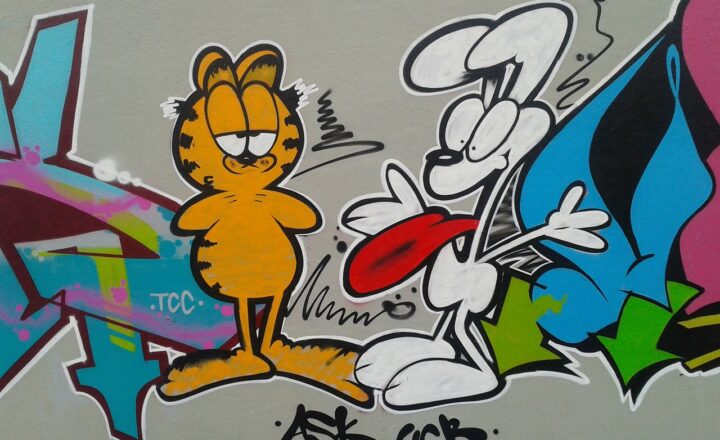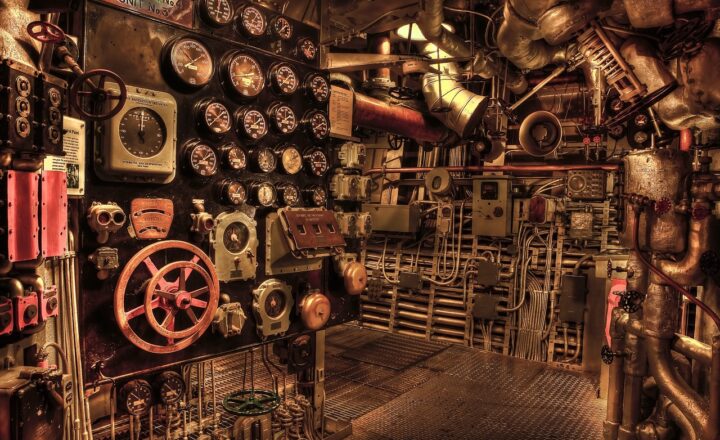The Hypnotic Power of the Zoetrope: A Strange Device for Visual Illusions
November 15, 2024

The world of animation is a vast tapestry woven with creativity and innovation, and few inventions have had the kind of remarkable impact on visual storytelling as the zoetrope. This enchanting device, which produces the illusion of motion from a series of static images, has a storied history that dates back to the 1830s. In this article, we will explore the zoetrope’s origins, its mechanics, its aesthetic appeal, and its lasting influence on modern animation—an enthralling journey through time and artistry!
1. A Glimpse into History: The Birth of the Zoetrope
The zoetrope was invented by William George Horner in 1834, who originally called it the “daedaleum.” The concept behind the zoetrope was not entirely new; it built upon earlier devices such as the phenakistoscope and the flip book that also created the illusion of movement. The daedaleum was a cylindrical device featuring slits on its sides and images painted on an inner surface.
When spun, the viewer could look through the slits and see a rapid succession of images that gave the illusion of animation. This revolutionary device captivated audiences from the moment it stepped onto the scene. By the late 19th century, the zoetrope had gained immense popularity across Europe and America, inspiring countless artists and inventors to explore the realms of movement and storytelling.
2. How the Zoetrope Works: The Mechanics Behind the Magic
The captivating nature of the zoetrope lies in its mesmerizing mechanics. At its core, the zoetrope operates on the principle of persistence of vision—a phenomenon where an image lingers for a fraction of a second on the retina after the source has moved away. This effect allows a series of images to blend together, creating an illusion of fluid movement.
Here’s how it works:
1. **Images on a Wheel**: The zoetrope features sequential images arranged on a rotating disk or cylinder. Each image is slightly different from the last, depicting a stage of movement.
2. **Slits for Viewing**: As the cylinder spins, the viewer gazes through vertical slits at the images. The design ensures that only one image is visible at a time, aligning perfectly with the rapid succession of frames to create continuity.
3. **Speed and Timing**: The effectiveness of the zoetrope relies heavily on the speed of rotation. If spun too slowly, the illusion breaks, and if spun too quickly, the individual images become indistinguishable.
The interplay of light, speed, and perception is what makes the zoetrope an enduring symbol of creativity and illusion.
3. The Aesthetic Delight: Why the Zoetrope Captivates
Beyond its mechanical workings, the zoetrope offers a unique aesthetic experience. The blend of art and science resonates deeply with audiences, showcasing the intersection of creativity and technology. Several aspects contribute to the zoetrope’s spellbinding allure:
– **Artistic Exploration**: Artists and animators utilize the zoetrope as a medium to explore visual storytelling, experimenting with movement, color, and form. This freedom of expression has led to some truly remarkable designs that delight the eye.
– **Collective Experience**: The zoetrope is often used in public displays, leading to a shared experience among viewers. The excitement of watching the images come to life in synchrony creates a communal atmosphere that enhances the appreciation for the artwork.
– **Tactile Engagement**: The physical interaction with the zoetrope—turning the crank, adjusting speed, or playfully watching the magic unfold—invokes a sense of nostalgia and engagement that digital animations often lack.
– **Historical Significance**: As a precursor to modern animation techniques, the zoetrope represents a pivotal moment in the evolution of visual arts. Understanding its role in artistic history adds layers to its charm.
Through these elements, the zoetrope becomes more than merely a device; it transforms into an experience—one that invites the viewer to immerse themselves in the animated world.
4. The Enduring Influence of the Zoetrope in Modern Animation
The principles that underpin the zoetrope continue to inspire contemporary animators and artists. Many modern animation techniques draw from the same concepts of persistence of vision and sequential imagery. The impact of the zoetrope can be observed in:
– **Early Animation Studios**: The zoetrope served as an inspiration for early animation pioneers such as Émile Cohl and Winsor McCay, who built upon its concepts to create short films with moving characters, thus laying the foundation for animation as we know it today.
– **Experimental Films**: Modern filmmakers often evoke the spirit of the zoetrope through experimental visual techniques that remind viewers of the roots of animation. Directors like Michel Gondry and animations like those found in Pixar films celebrate the marriage of art and technology reminiscent of the zoetrope’s magic.
– **Digital Applications**: Even in the digital age, animators use software that mimics zoetrope principles, employing frame-by-frame animation to achieve smooth and real-life motion. This technology continues the legacy of dynamic storytelling that the zoetrope first exemplified.
Thus, the zoetrope not only paved the way for animated media; it remains a vibrant thread woven through the fabric of visual arts.
5. Crafting Your Own Zoetrope: A Hands-On Experience
For those inspired by the rich legacy of the zoetrope, creating your own version can be a delightful and rewarding project. Here’s a simplified guide on how to build a basic zoetrope at home:
**Materials Needed:**
– A circular cardboard or plastic disc
– A base (e.g., wood or sturdy cardboard)
– Scissors
– Tape or glue
– A small motor or the ability to spin the disc manually
– Sequential images (drawn or printed)
**Steps:**
1. Cut the circular disc and secure it onto the base.
2. Divide the disc into segments and add your sequential images in order.
3. Create slits in the side of the base that aligns with the discs’ images.
4. Attach a motor or prepare to spin the disc by hand.
5. Turn the disc while looking through the slits; you may witness your very own animated sequence come to life!
Crafting a zoetrope gives you a hands-on understanding of its mechanics and a deeper appreciation for the art of animation.
Conclusion: The Magic of the Zoetrope Lives On
The zoetrope stands as a timeless testament to human creativity and innovation. From its origins in the 19th century to its influence on contemporary animation, it continues to mesmerize audiences with its hypnotic power and artistry. As we journey through the visual world, let us remember the zoetrope—a simple yet profound invention that laid the groundwork for the animated stories that enrich our lives today. Discovering the art of the zoetrope is not just about observing motion; it’s about reliving a creative legacy that invites us to imagine, dream, and visualize the extraordinary through the lenses of history and innovation.







